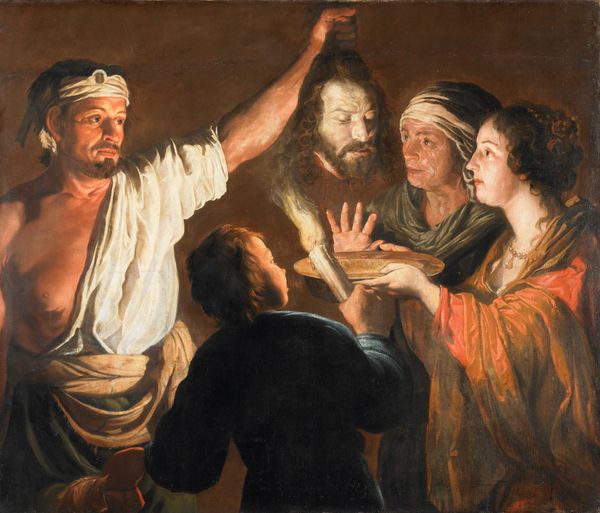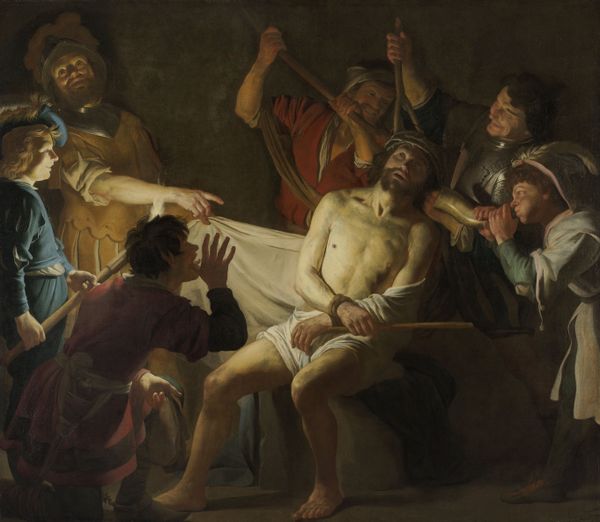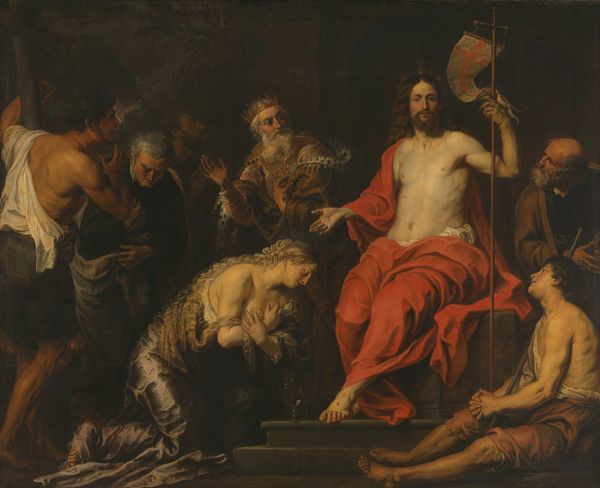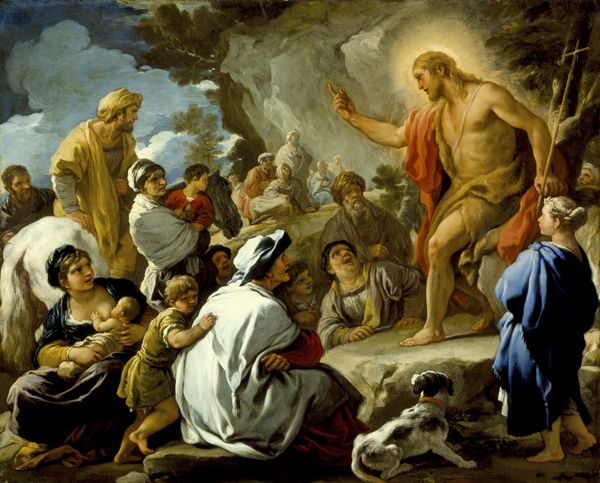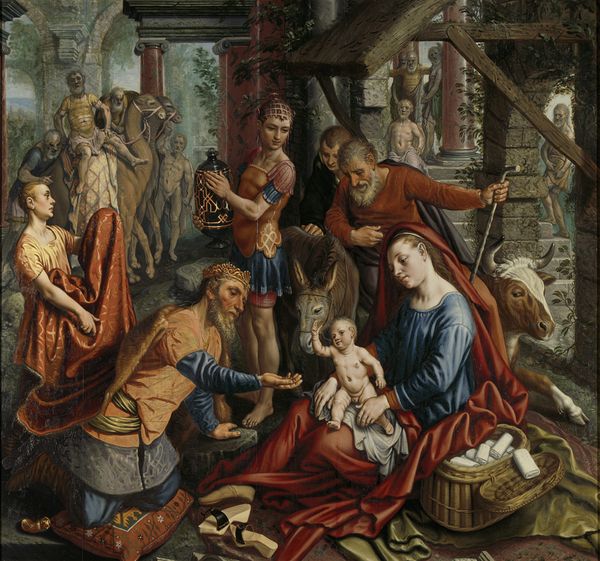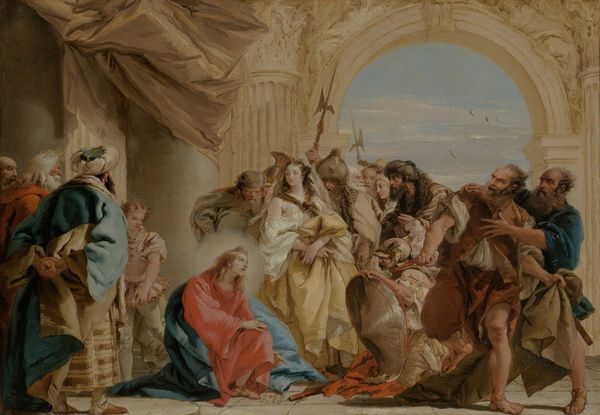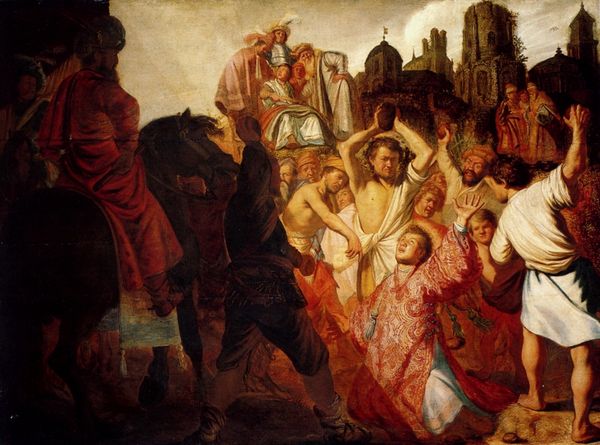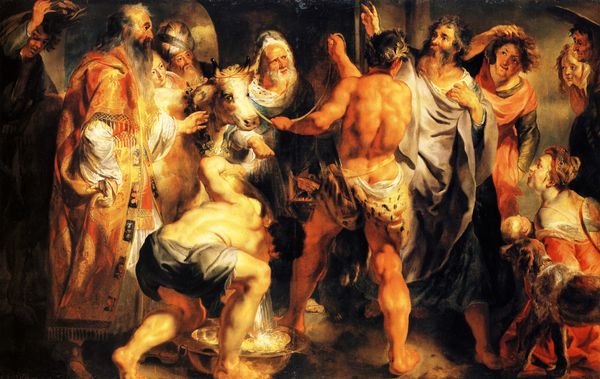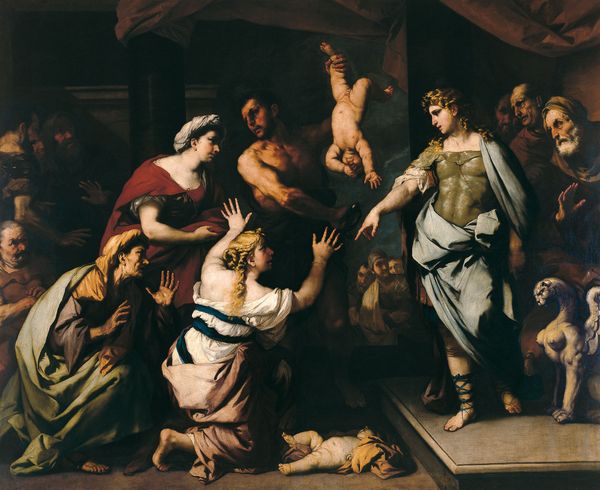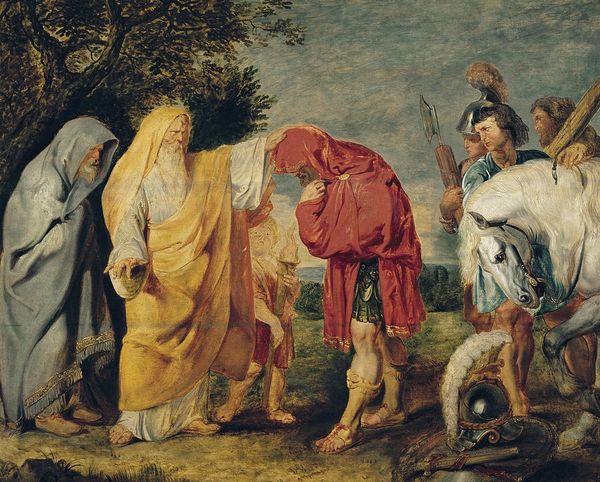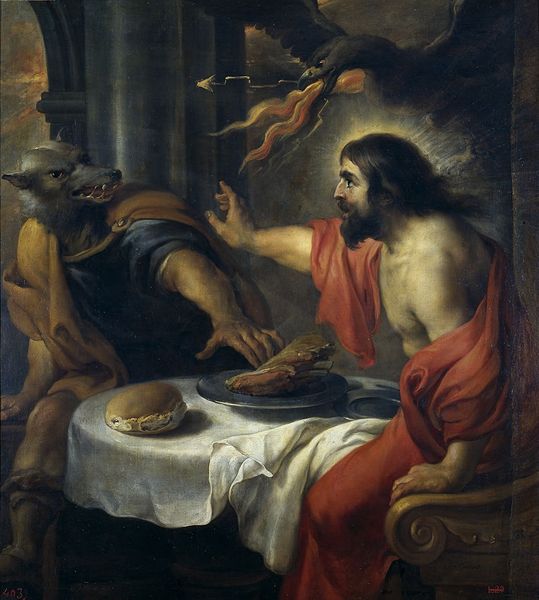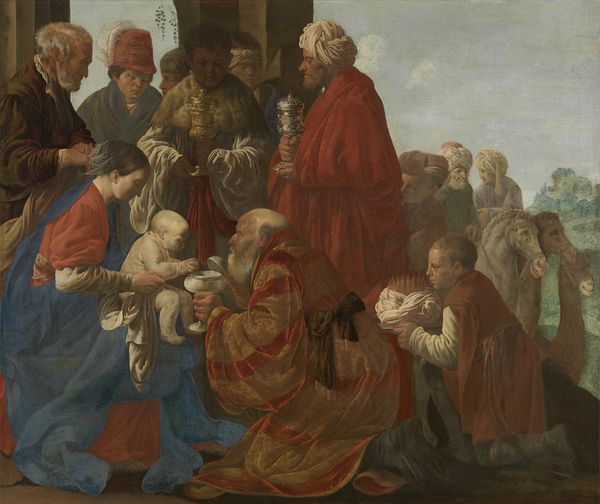
painting, oil-paint
#
narrative-art
#
baroque
#
painting
#
oil-paint
#
landscape
#
figuration
#
oil painting
#
chiaroscuro
#
history-painting
Dimensions: 90 cm (height) x 139 cm (width) (Netto)
Curator: Standing before us is Jan Tengnagel’s “The Raising of Lazarus,” completed around 1615. You can find this painting in the collection of the SMK, the Statens Museum for Kunst. Editor: Wow. It's kind of unsettling, actually. This hazy light bathing the scene... It’s like witnessing a miracle through a dusty window. It really is so evocative! Curator: Tengnagel employs classic baroque techniques to dramatize the moment, notably chiaroscuro, heightening the contrast between light and shadow, but also the use of linear perspective. We see the focus clearly drawn towards Lazarus being raised, seated, in an attempt by companions to help Lazarus. It makes for an interesting narrative compositionally, don't you agree? Editor: Oh, absolutely, that raw physicality mixed with the divine—you get this push and pull, which I am not sure actually comes together to be fully harmonized. Lazarus himself, bound, sort of as if still in a mummy like representation with figures practically holding him back, I cannot stop pondering. Are they protecting him, perhaps? Curator: It’s a masterful touch, yes, the positioning and binding, creating a sense of both physical restraint and spiritual potential, which certainly amplifies the tension. Think about it this way, we have these diagonal and parallel horizontal lines that work as directional pulls. The dark colors pull Lazarus forward while those brighter spots create visual interruptions and work to stall our gaze. What could these tensions be speaking to? Editor: That’s exactly the kind of visual complexity that just stays with you! Like some hidden language bubbling beneath the surface of religious paintings, which have this deep undercurrent. You cannot dismiss or fail to notice all the details or these characters that truly give an expression to the artist in this moment in time! It gives a sense of it never truly happened before, nor to have existed since. Curator: It shows how skillfully Tengnagel could play with contrasts in both the form and content. His Lazarus transcends pure history painting through this, opening channels to complex interpretations through these elements of color, form and figures and their presentation to one another. Editor: Precisely! It’s more than just observing a scene; it's wrestling with its enduring echoes through a deeply reflective artwork! Curator: Yes, "The Raising of Lazarus," while anchored in biblical narrative, offers us a formal language rich for contemplation, both in its time and in our own. Editor: Agreed, it definitely does haunt and invigorate, sometimes all at once, depending on the frame of reference, making it perversely engaging even centuries later!
Comments
No comments
Be the first to comment and join the conversation on the ultimate creative platform.
